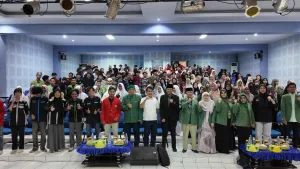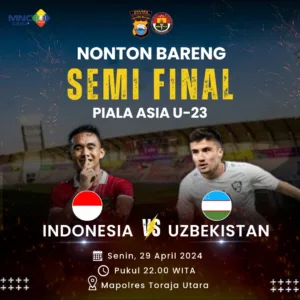It was supposed to be a routine signing ceremony. That morning, Sofyan Kaepa, Regent of Banggai Laut, waited patiently inside the rectorate building of Hasanuddin University in Makassar. A quiet formality. A memorandum of understanding. A photograph for the archives.
But before the Rector arrived, a conversation with a geologist changed everything. “Do you know,” asked Professor Adi Maulana, leaning in with the calm certainty of a man who studies time itself, “that your land in Banggai is sitting on a critical mineral reserve? Rare earth metals.”
Sofyan blinked. Rare earth metals? Those elusive elements shaping the future of green technology, defense systems, and electric vehicles? The same resources that Presidents and Premiers—Trump, Xi Jinping, Putin—have jockeyed for in silence and shadow?
In that moment, Banggai—an otherwise quiet archipelago off the coast of Central Sulawesi—suddenly found itself on the geopolitical map.
To most Indonesians, the east remains a periphery. Yet beneath its volcanic ridges, forest canopies, and coral-ringed coastlines, lies a future so vast it reshapes Indonesia’s standing in the world.
Eastern Indonesia—stretching from the limestone cliffs of Obi Island in North Maluku to the weathered granite slopes of Banggai—is a geological goldmine. And not just the literal kind. While nickel and gold have long attracted investment, it is the rarer treasures—neodymium, praseodymium, and scandium—that now spark international rivalry.
“When it comes to mineral wealth, the east of Indonesia isn’t just rich—it’s foundational to the next generation of global industry,” says Prof. Dr. Eng. Adi Maulana, a leading geologist and professor at Hasanuddin University.
Indonesia’s geological maps confirm this promise: cobalt, platinum, chromium, and uranium all scatter the land. But it’s the rare earth elements (REE)—scattered in Banggai’s weathered clay, layered through Papua’s rock veins, and embedded in Sulawesi’s laterite soils—that carry the greatest weight in the age of electrification.
Banggai is quickly becoming the name to remember.
Behind its gentle green hills and sleepy fishing villages, Banggai hides a rare geological profile: granite that has endured millions of years of tropical erosion. The result? Thick layers of clay rich in REE—easy to extract, and of high strategic value.
“In Banggai, the REE are not trapped in hard rock,” Prof. Adi explains. “They’re in clay, easier to mine and process. That’s rare. That’s gold—figuratively and, increasingly, literally.”
The LREE (Light Rare Earth Elements) found here—neodymium and praseodymium—are essential to producing supermagnets for electric motors, wind turbines, and high-end military systems. Banggai also hints at scandium reserves, a metal lighter than aluminum and more expensive than platinum.
The significance isn’t lost on anyone watching the global green transition. These minerals aren’t just inputs. They’re enablers. And they’re weapons.
Right now, China controls roughly 90 percent of the world’s rare earth supply chain. The United States, the European Union, and Australia are scrambling for alternatives, seeking out nations that can diversify this dependence. Canada, Vietnam, and Malaysia are in the game. Now, Indonesia is emerging—unexpectedly—as a player.
“This is no longer about mining,” Prof. Adi warns. “This is about geopolitical leverage.”
Whoever controls REE controls the gears of modern economies. The electric vehicle boom? REE-powered. Renewable energy systems? REE-reliant. Cutting-edge defense technology? REE-dependent.
But there’s a catch. Indonesia has been here before—with oil, with coal, with palm oil. The pattern is all too familiar: extract raw materials, export them, and import them back as expensive finished goods.
Prof. Adi calls it what it is: the resource curse. “We can't afford to repeat that cycle. We must build capacity to process, refine, and innovate. Not just mine,” he says.
In other words, it’s time to build not just refineries—but a vision.
Other countries are already doing it. Australia and Japan have partnered to break China’s dominance. Vietnam has announced a national REE strategy. Indonesia, with Banggai as its hidden ace, needs to move fast—or be left behind.
“We’re sitting on the future,” says Prof. Adi. “If we don’t shape it, someone else will.”
Time is running out. The global energy transition is accelerating. Electric cars, smart devices, drone warfare—all are now dependent on a supply chain that starts in the soil.
And in Banggai, that soil is speaking.
Beneath the rainforests of Sulawesi and the sediment shores of Halmahera, a new Indonesia is forming. One not of plantations and raw exports—but of high technology, critical minerals, and economic sovereignty.
“The future,” Prof. Adi concludes, “is already here. We just need to answer its call.”
From Banggai, from the East, the pulse of tomorrow beats louder.
_6.webp)



_6-300x201.webp)







